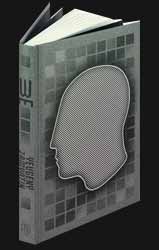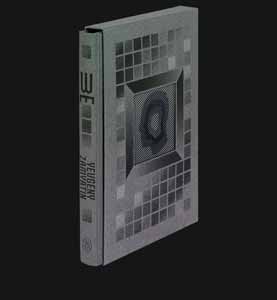|
Click here to return to the main site. Book Review
Dystopian novels came mainly to the forefront of public consciousness with the creation of the nuclear bomb, they had existed previously but with the advent of the bomb there was a real probability that we could destroy ourselves. As a genre it has remained popular in an ever increasingly dangerous world. Of course, the fear wrote by changes in technology and politically motivated technodictators have been the subjects of some of the best science fiction including Aldous Huxley’s Brave New World (1932) and George Orwell’s Nineteen Eighty-Four (1949). Whilst these remain important books they were preceded by a banned novel, We, written by Yevgeny Zamyatin. The book has been reprinted by the Folio Society (2018. 240 pages) Originally completed in 1921 the story was presented as fictional prognostication and was immediately banned in Russia. Similar to Orwell and Huxley’s novels whose stories really reflected their own times, the story is a reflection and reaction to post Bolshevist Russia. Zamyatin had originally been a been a prominent Bolshevik, but as Russia changed following the October Revolution he became increasingly disillusioned with Lenin’s concept of communist democratic centralism, which created a totalitarian central party bent on shaping the country in their own image. The Russians had unknowingly traded one dictator for an equally worse one, and under Stalin created a system of government which, like a monstrous animal, fed on its own people. In contrast, Zamyatin’s future world is almost idyllic. The book is written in the form of a journal. D-503 is an engineer working on the launch of the INTERGRAL, a spaceship which will contain writings meant to free other civilisations from the oppressions of anarchy, as demonstrated by freewill and the wildness of nature. The Onestate for which he works consists of one enormous city ringed round by a green glass wall. Everything inside is reduced to numbers, even the cities inhabitants. Inside the city the main building material is clear glass, where everyone can see everyone else and non-conformity is easier to spot. Non-conformists are dealt with by the Guardians and the only punishment is death, by public electrocution. Lives are strictly controlled via timetables and mathematics. When D-503 gets up in the morning he is able to see the reassuring sight of all his neighbours doing the exact same thing at exactly the same time. The past has been cleared and cleaned following the 200 year war and though only 0.2% of the population is left alive they have built a technologically advanced society in the image of the city founder the Benefactor. At the start of the book we can see that both D-503 and the city have already sowed the seeds of change and further revolution, two things, one hidden, one not, wait in their cancerous way, for an initial trigger to set them free. Personally for D-503 he is haunted from the time he was introduced to imaginary numbers, elements which cannot be shown to exist in the real world, but take imagination to understand, a form of individualism which cannot be subsumed to the state. The city also contains an anachronism. In one corner, under its own protective dome, lies the Ancient House, a place preserved from before the war, given that an old lady still lives in it, it forms a sort of living museum, but it is a museum of chaos, which should be an anathema to the ruling party, even though they try to use it as an example of what was bad about the past D-503 and I-330 use it for secret assignations much in the same way that Winston Smith and Julia would use theirs. Both rooms create an affinity in the characters, linking them to a mythically free past. All three novels show worlds where freedom and beauty are not useful concepts for the state; they represent the needs of the individual. In Nineteen Eighty-Four, the state crushes the individual; Huxley’s world bred behaviours useful to the state and drugged what they could not control, plus they really hated flowers. Likewise all three novels present a society where the bonds of marriage and sex have to be broken, as they are the most intimate and the most removed from central control. In the palatial glass city D-503 need only request a pink ticket to engage in sex with another person. He also needs to request permission to draw down the blinds in his room, essentially cutting him off from the state, but this too is a slave to time and can only be lowered for a specific amount of time. In a strange way the state is willing to allow citizens to carry a pre apocalypse neurosis regarding the naked body. For this reason the book is often seen as an allegory of the book of Genesis with D-503 and I-330 standing in for Adam and Eve, their forbidden shameful sexual liaisons enacted behind shutters and hidden in rooms challenges the godlike state and threatens their expulsion from paradise. All these novels speak to a freedom which is diaphanous at best juxtaposed with the notion that a change of state would be preferable, that individual freedom inevitably leads to personal happiness. But freedom is a difficult thing to quantify. For Winston freedom was the right to say that 2+2=4, but for D-503 this becomes a tyranny. His fear of imaginary numbers aside, D-503 is a contented drone. He finds comfort in uniformity and conformity, comfort in the elegance of 2+2=4. When he starts his illicit meetings with I-330 it awakens something in him which he initially thinks of as illness. Even so, he cannot bring himself to report to the Guardians for either correction or disposal. Through the story we see both his growing confusion over the emotional turmoil created in the wake of I-330 and his fervent desire to always be with her, she both attracts and repels. This relationship drives most of the story. It is interesting to note that while Huxley and Orwell wrote their dystopian novels in essentially free countries, their endings had a bleak finality, whereas Zamyatin offers some hope at the end of the book. Paradise may or may not be lost, but societies cannot remain static, revolution and evolution always wait in the wings ready to break out, creating a different and just possibly a better and more interesting future. The book, as previously stated, has been reprinted by The Folio Society. If you’re a serious book lover I’m guessing I’m preaching to the converted. Folio output limited quantities of books which are lovingly hand cut and bound. They go beyond the words to create a truly artisan object. The book measures 9½˝ x 6¼˝ with a lenticular design slipcase decorated in silver with square variegated shaded boxes as an adornment. As you slide the book into the case the lenticular window creates the illusion of a pulsating head. The book is bound in Surbalin Perleffert paper. Inside the book the pages are thick with quality pale white paper and the script is printed in PT Serif with Wells Grosteque display. Monochrome illustrations are provided by Kit Russell, stylistically Modernist, they complement the book perfectly. The book has an introduction by Ursula Le Guin’s contemplation on the concept of censorship, well worth a read. Lastly, as a translation from the Russian, Clarence Brown has done a magnificent job in capturing the nuances of the plot, the characters and the ideas contained within the story. The book is being posited as the greatest science fiction story ever written, a statement which will be a red rag to a lot of people, but give it a chance and read without any preconception and I think you will agree that it is up there with Nineteen Eighty-Four and Brave New World and in such august company I do not think that Zamyatin would have found himself disappointed. 10 Charles Packer
|
|---|

